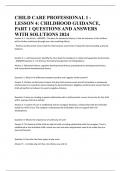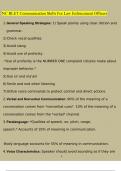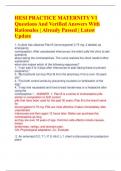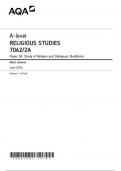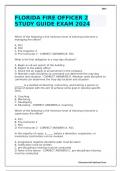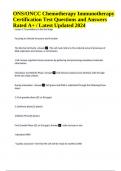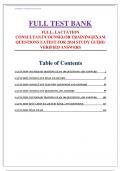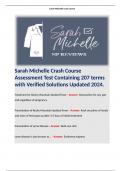Exam (elaborations)
CHILD CARE PROFESSIONAL 1 - LESSON 4: CHILDHOOD GUIDANCE, PART 1 QUESTIONS AND ANSWERS WITH SOLUTIONS 2024
- Course
- Institution
CHILD CARE PROFESSIONAL 1 - LESSON 4: CHILDHOOD GUIDANCE, PART 1 QUESTIONS AND ANSWERS WITH SOLUTIONS 2024
[Show more]
